Champions of Change Blog
Building Bridges to a Safer Society
Posted by on May 17, 2013 at 4:55 PM EDT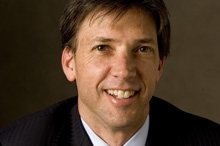 John R. Hillman is being honored as a Champion of Change for his efforts as a leader in transportation.
John R. Hillman is being honored as a Champion of Change for his efforts as a leader in transportation.I became a civil engineer because I love building things. I gravitated towards bridges, because literally and figuratively I get to help people stay connected. I never dreamed that I would get this type of recognition just for doing what I enjoy. I am both honored and humbled to be included in the distinguished company of the other White House Champions of Change.
In our fast paced culture, consumed by and constantly connected to computer technology, transportation infrastructure can appear unsophisticated, and most people take what we do for granted, myself included. However, by virtue of what we do every day as civil engineers, we are responsible for creating the infrastructure that provides for a safer, more comfortable, and more peaceful civilization. Our chosen profession also comes with huge responsibilities, and the fear of failure can easily become an obstacle to embracing change. Regardless, beginning in 1996, I sought to create a better and more sustainable method of building bridges through the invention of the Hybrid-Composite Beam.
The “Hybrid-Composite Beam” (HCB®), is a new type of structural member developed for use in highway bridges, railroad bridges, and other structures. In essence, the HCB is a tied-arch of concrete and steel contained in a composite shell that optimizes the structural performance of each material in the composition. What results is an economical structural member that offers service lives in excess of one hundred years and that is lighter weight, safer, corrosion resistant, and all around more sustainable than structures of conventional materials. It took over twelve years of painstaking research and development before the first HCB Bridge was constructed, but today there are over twenty-four spans in seven different states. Now I am contacted on a daily basis by engineers and infrastructure owners from all corners of the globe who want to build HCB Bridges in their respective countries.
Over two hundred million trips are taken daily across deficient bridges in the nation’s 102 largest metropolitan regions. Throughout our national bridge inventory, one in nine bridges are rated as structurally deficient, while the average age of the nation’s 607,380 bridges is currently forty-two years. In its 2013 Report Card for America’s Infrastructure, ASCE gave the nation’s bridges a C+. While this is an improvement, challenges still remain. The Federal Highway Administration (FHWA) estimates that to eliminate the nation’s bridge deficient backlog by 2028, we would need to invest $20.5 billion annually, while only $12.8 billion is being spent currently. My goal with the invention and development of the HCB is to provide a revolutionary bridge technology that not only remedies the state of our decaying bridges, but also provides a solution to this problem that will reduce the burden of infrastructure rehabilitation costs for future generations.
I am grateful for the recognition that I have received for the development of the HCB and I feel very fortunate for the opportunities that have been afforded me as a result. Building innovative bridges has proven to be a very fulfilling profession. The places that I have traveled to and the people that I have met along the way continue to make for an amazing odyssey. By the very definition of our profession, it is our legacy to create a better civilization. I hope that my journey, fueled by a passion for innovation and creativity, will inspire future generations of civil engineers to reinvent the built environment.
John R. Hillman, is Chief Executive Officer and Chairman of HCB, Inc.
Learn more about TechnologyA Rising Tide Lifts All Ships
Posted by on May 17, 2013 at 4:52 PM EDT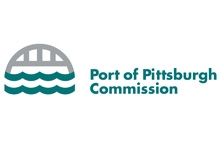 James McCarville is being honored as a Champion of Change for his efforts as a leader in transportation.
James McCarville is being honored as a Champion of Change for his efforts as a leader in transportation.I am pleased to accept this award on behalf of the Port of Pittsburgh Commission (PPC) and the PPC's Wireless Waterway Committee, and the many other individuals and entities who came together because we truly believed the adage that says “a rising tide lifts all ships.”
This Wireless Waterway project is the result of thousands of volunteer hours by members of the Commission and an equal amount by those in the towing industry, academia, the US Army Corps of Engineers (USACE) and the federal Committee on Marine Transportation (CMTS), to all of whom we are extremely grateful.
The Port of Pittsburgh Commission got involved in transportation technology because we saw a gap. While the towing industry was improving its own part of the system, and the Corps theirs, no one was capturing the efficiencies possible in the interaction between the two. We therefore hosted listening sessions throughout the river system, identified industry perceived problems and consulted with Carnegie Mellon University in the hopes of finding tech solutions already invented for other modes. At that point we began getting serious in our discussion with USACE and began comparing notes with our European counterparts on technology advances they had already started. We gave birth to the first “international benchmarking conference of best inland river technology practices” called “SmartRivers,” which is now an international conference held every other year around the world hosted by PIANC, the Permanent International Association of Navigation Congresses.
Our first homegrown technical solution, “SmartLock,” demonstrated how a towboat moving at a couple of miles per hour could navigate a narrow lock chamber entrance in low visibility (a feat airlines perform hundreds of times faster). Students at Carnegie Mellon designed for us a computer-aided virtual locking system. Not only was it an excellent solution, but they also donated the patent rights to the PPC. The only problem was, for the system to work most efficiently for industry, it needed a network so it could be duplicated at all or many of the locks. This was a challenge since seventy percent of the inland waterway system is in rural areas, in low-lying valleys like Pittsburgh, or in low-income neighborhoods not well served by the Internet. Since USACE was already budgetarily hard-pressed to maintain the very valuable lock and dam infrastructure and no third party would build a network for a single application, we went back to the drawing board.
Our next project with Carnegie Mellon students was a communications-architecture on the waterways to know who was talking to whom. Not only did the students inventory all of the conversation paths between company headquarters, towboats, USACE, US Coast Guard, National Weather Service, and the IRS, but they demonstrated a simplified design to eliminate multiple entries, improve accuracy, and reduce expensive data verification. It was great progress, but it still needed a network.
It was then that Rex Woodward, Chairman of our Wireless Waterway Committee, introduced us to Tom Dauer, a Pittsburgh native loaded with communications experience and with a vision of integrating the newest communications technologies into layered services linking towboats, terminals, truckers, first responders, government regulators, and government service providers into an integrated, safe, secure system. Merging Tom’s tech expertise, Rex’s business insight, and the PPC contacts, we had a game plan. Because the PPC was considered a trusted third party, we linked the best expertise from each of these partners, all of whom saw the benefit of having a common solution.
With the help of some Port Security Grants and PPC matching funds, we built the first leg of this system. It includes (a) the basic Network System Infrastructure (NSI), which is scalable and expandable; and (b) an Interoperability Test Bed, which will keep us “state of the art.” Testing begins on June 7th, and you are all invited. We expect the project to generate its own revenues for maintenance and some build out. More importantly, it will bring transparency to an otherwise invisible system. It will improve security at the port and lead to better scheduling for towboats, terminals, trains, and trucks, as well as creating a better quality of life for people who work the towboats, people who often spend weeks away from their families.
If we look at any major infrastructure project, whether the Erie Canal, the interstate highway system, even NASA, we see that it was a new technology that solved old problems. We hope to see the same here. We expect these efficiencies will not only attract new cargoes to the rivers, but that the increased cargo will help justify revitalization of the lock and dam infrastructure.
Going forward, to capture these opportunities, the Port of Pittsburgh Commission has created an affiliate Non-Profit Corporation, Pittsburgh Port Technology, Inc., to better leverage the innovative resources of communities, corporations, foundations, and states along our rivers. As a friend of mine put it: “Better technology leads to better data which leads to better decision-making.” The Port of Pittsburgh Commission is pleased to be part of this process and honored to be named a ‘White House Champion of Change.’
James R. McCarville is the Executive Director of the Port of Pittsburgh Commission (PPC), a Commission of the Commonwealth of Pennsylvania.
Learn more about TechnologyMission Possible: Tackling Mobility, Safety, and Environmental Concerns to Create Safer Commutes
Posted by on May 17, 2013 at 4:47 PM EDT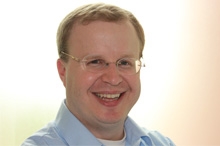 Michael Pack is being honored as a Champion of Change for his efforts as a leader in transportation.
Michael Pack is being honored as a Champion of Change for his efforts as a leader in transportation.I often struggle to explain to friends and family what I do in my transportation research job at the University of Maryland. Those who have seen Mission Impossible III might recall that Tom Cruise plays a secret agent whose cover story is that he’s a transportation engineer for the Virginia Department of Transportation. His dual identity is foolproof. His ramblings on traffic theory inevitably put everyone to sleep 10 seconds into any discussion about his work, immediately halting any additional questions or probing. My struggles with describing this line of work aren’t with the perception of transportation research as a snoozefest. My challenge is that this field is so broad and far-reaching that I have difficulty getting people out of the mindset that transportation is only about bridges and traffic signals.
Transportation is the backbone of our civilization and the reason for our economic prosperity for the past fifty-plus years. However, there are major challenges facing us today. In Washington, D.C., my home, it’s estimated that congestion alone costs over $2.7 billion annually, including 134 million hours of wasted time stuck in traffic and ninety-one million gallons of excess gasoline consumed. Nearly half of this congestion is due to crashes, disabled vehicles, and weather-related hazards. This preventable and manageable congestion costs individual motorists time and money, reduces the region’s economic competitiveness, and decreases air quality by increasing vehicle idling time and emissions. If that weren’t enough, approximately 40,000 people die, 2.5 million people are injured, and over four million are involved in property-damaging crashes annually in the U.S. Getting into an automobile is the most dangerous activity most of us do every day.
Since my graduation, my objective has been to help improve traffic and safety on our nation’s roadways, not simply by building bigger roads, but by making better use of what we already have through intelligent transportation systems. I view it as my responsibility to ensure that the declining funding for transportation investments are spent wisely on solutions that make our roads (and the people that drive on them) smarter and safer by leveraging our existing infrastructure to its greatest potential. After all, those are my tax dollars, too.
Since 2002, I’ve been leading a talented young group of researchers and software developers at the University of Maryland to provide innovative web-based tools to Departments of Transportation (DOTs) and first responders. These tools allow public agencies to make better, more informed investment decisions through visualization and sharing of their own real-time data. This data includes things like incredibly detailed accident statistics, traffic congestion measurements, weather data, travel behavior, and other information related to the dispatch and actions of first responders. I spend countless hours working with state and local DOTs, transit agencies, and first responders to explain the benefits of opening their data up to one another and to the public—all of which can ultimately lead to less congestion, waste, better decisions, and fewer injuries on our roadways. Through the use of these visualization technologies, agencies can now answer tough questions that were previously unanswerable, make rapid decision on where to invest their limited dollars, provide better information to the public, and even speed up their response to life-threatening crashes.
I’m proud of the outreach, education, and visualization tools that I’ve brought to the transportation community. Let’s continue to invest in solutions to tough mobility, safety, and environmental concerns while simultaneously making better use of our limited transportation funding. I hope that these efforts will shed light on the importance of transportation and the need to encourage young, talented minds to get involved in this industry. In doing so, I’m trying to make your everyday commute a little better, while also forcing Tom Cruise’s character in Mission Impossible to choose a better disguise.
Michael Pack is the Director of the CATT Laboratory at the University of Maryland and the creative director of Regional Integrated Transportation Information System or RITIS.
Learn more about TechnologyEnhancing Public Transit with Innovation, Technology, and American Ingenuity
Posted by on May 17, 2013 at 3:17 PM EDT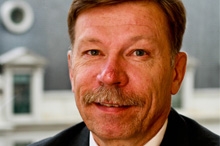 Jeffrey Wharton is being honored as a Champion of Change for his efforts as a leader in transportation.
Jeffrey Wharton is being honored as a Champion of Change for his efforts as a leader in transportation.It is a distinct honor for IMPulse NC LLC to be recognized as a White House Transportation Champion of Change among such an elite group of professionals and organizations who are making a difference in transportation technology solutions for the 21st Century. Being in the public transportation industry for the last thirty-three years has provided me the opportunity to witness the growth, the transformation, and the engine for economic drive that public transit systems create for this great country.
Transportation is the “backbone” of the economy and public transit is a vital aspect of our national surface transportation system. Furthermore, technology is the key to increasing global competiveness. Here at IMPulse we accomplish this by leveraging the time-tested lessons of “80/20” statistical analysis as part of a continual thinking process. We would rather lead than follow and set ourselves apart from the pack. It’s all about American ingenuity!
As a brief background, IMPulse NC LLC, a Marmon Group / Berkshire Hathaway company, is a leading Overhead Contact System / Catenary hardware manufacturer located in Mount Olive, North Carolina. Our company’s name brand is “Ohio Brass,” which dates to the construction of the first electric-powered streetcar system in Richmond, Virginia in 1888. Our products are used to support the aerial wires that feed power for Commuter and InterCity Trains, Light Rail Trains, Streetcars, Vintage Trolleys and Electric Trolleybuses. IMPulse products are made in America - meeting Federal Buy America requirements - and undergo strict adherence to ISO 9001:2008 Quality Standards. We are also a member of the American Public Transportation Association.
Located in a small rural community where southern hospitality and strong work ethics are the norm, we have a great group of dedicated and hardworking employees who contribute to the success of our organization. In addition, the local community network is second to none. This has allowed for greater opportunity to innovate, experiment and transform product solutions for customers all over the nation.
Through this process we have developed a new cutting edge technology for a patent-pending automated Catenary Safety Monitoring System, which improves reliability, security and safety of commuter and light rail transit systems while reducing maintenance costs. This automated system remotely and constantly monitors the overhead line (catenary) and its balance weight assemblies. It identifies actual and potential maintenance problems, thus increasing the safety and reliability of a transit line. Its solar power (“green” energy) eliminates utility connections which allows remote monitoring anywhere along a rail line. The system is designed to eliminate the need for daily visual inspections while providing transit agencies with real-time access to the overhead wire system 24/7 with wireless alerts.
IMPulse recently completed several months of successful on-site tests along Virginia’s light rail line for Hampton Roads Transit (HRT) - “The Tide.” The system even withstood the impact of Hurricane Sandy in October 2012. The industry response has been positive with another project in progress for Los Angeles.
I look forward to IMPulse’s continued innovative support of the public transit infrastructure and its benefit to our economy and quality of life. IMPulse is proud to be a preferred business partner for public transit systems throughout North America, and I have the distinct privilege of being its President.
Jeffrey Wharton has been a transit professional for the past 33 years and has been instrumental in manufacturing overhead catenary hardware supplying electrification systems for commuter, light rail, streetcar and electric trolleybus.
Learn more about TechnologyDomestic Worker Organizing: From Invisibility to Recognition
Posted by on May 13, 2013 at 12:45 PM EDT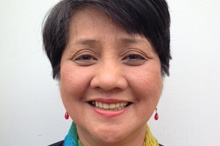 Myrla Baldonado is being honored as a Champion of Change for her efforts as an AAPI Women leader.
Myrla Baldonado is being honored as a Champion of Change for her efforts as an AAPI Women leader.
I have been a home care provider since I moved to the United States in 2007. As a caregiver I worked 24 hour days earning a wage that was lower than the Illinois minimum wage. I prepared food, fed, bathed, cleaned up the house, changed diapers, lifted, turned, dressed wounds, prepared medicine, provided comfort, understanding and love to elderly patients. This work was both physically and emotionally draining. I worked fulltime which placed me in a similar situation as the majority of domestic workers who have families to support with low wages and no benefits. I worked long hours in isolation, struggling often through abusive situations in an unregulated industry where domestic workers are excluded from even the most basic protections such as minimum wage and overtime pay. Furthermore, I experienced loneliness, humiliation and loss of self-esteem.
This suffering encouraged me to develop the courage to stand up and speak to the general public about my own personal experiences and that of other caregivers whom I have met through my work. In my search for a solution I joined Caring Across Generations and started to understand that the growing need for more caregivers is being fueled by the quickly aging American population. Immigrant women and people of color like me make up the majority of workers who are meeting this demand for care. Thus, in order to achieve quality long term care for the elderly and the disabled of America, workers and consumers must work together.
I also joined Latino Union, a member organization of the National Domestic Workers Alliance, in 2011 as a household worker organizer. In the course of that work, I crossed boundaries to co-found the multiracial Chicago Coalition of Household Workers where Asian Americans can work collectively with Latinas and African Americans in order to gain justice, dignity and respect for caregivers, housecleaners, and nannies. In a small period of time we’ve made some significant achievements.
Jane Addams, a prominent social reformer and the first American woman Nobel Peace Prize awardee, founded a settlement house called the Hull House at the turn of the century in Chicago. That House is now a museum that hosts an exhibit called “Unfinished Business: Home Economics in the 21st Century.” The exhibit honors Mary Keyser, the housekeeper of the Hull House, who worked for Jane Addams and her colleagues. A saying of our movement is painted in big letters on the wall of the exhibit: “The Work that Makes All Work Possible". One of the artifacts in the exhibit is my “freedom notebook,” a journal of the difficult tasks of caregiving. It stands for my strong desire to set my mind free and to lift my spirit from a prison-like situation to organize domestic workers, build a movement, and make change. It is with this resolve that I carry on with me the vision of a caring society where workers are treated equally and will no longer live on poverty wages through situations of abuse and discrimination.
Myrla Baldonado is a household worker organizer with the Latino Union of Chicago, co-founder of the Chicago Coalition of Household Workers, and a worker leader for the National Domestic Workers Alliance.
Commitment to Service & Community
Posted by on May 13, 2013 at 12:22 PM EDT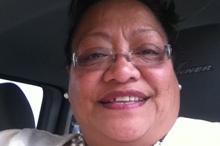 Lusiana Tuga Hansen is being honored as a Champion of Change for her efforts as an AAPI Women leader.
Lusiana Tuga Hansen is being honored as a Champion of Change for her efforts as an AAPI Women leader.
I am a Pacific Islander born in a small Island in the middle of the Pacific Ocean called “Manu’a Island” in American Samoa. I have 5 sisters and 2 brothers and am from a big family of the Manu’atele, whose roots goes back to the last King of the Manu’a Island. I moved to Anchorage Alaska in 1985 and currently work for the State of Alaska at the Department of Administration Division of Motor Vehicles. Beside my full time job, I attend the University of Anchorage Alaska where I am majoring in Office Technology.
In 2004 I started the first Samoan Language Computer school for elders. In 2005, I helped establish a new organization called Polynesian Association of Alaska (PAOA) to help provide our Polynesian Community in Alaska with cultural events, history, arts and crafts programs that bring us together.
As the President of PAOA, I and my board members created a community event, “Polynesian Culture Flag Day,” to celebrate the history, culture, arts, and crafts of our Polynesian Islands. This event also brings together elders and young people from diverse communities in Anchorage.
On my volunteer journey in the City of Anchorage and the State of Alaska, I have found that helping others gives me a sense of belonging. Earlier this year, I volunteered again to start a new organization in Anchorage called the Anchorage Polynesian Lions Club. As a President of this Lions Club, our mission is simply “to serve.” We serve anyone and everyone that needs help in the community.
I still find the time to provide services to our elders, from helping them to move to driving them to their medical appointment and back home. There are so many ways in which we can provide services to our community. I encourage everyone to take that extra time you have to provide volunteer services for someone that need your help. Do it because you care.
Lucy Hansen is President of the Polynesian Association of Alaska.
- &lsaquo previous
- …
- 68
- 69
- 70
- 71
- 72
- 73
- 74
- 75
- 76
- …
- next &rsaquo
White House Blogs
- The White House Blog
- Middle Class Task Force
- Council of Economic Advisers
- Council on Environmental Quality
- Council on Women and Girls
- Office of Intergovernmental Affairs
- Office of Management and Budget
- Office of Public Engagement
- Office of Science & Tech Policy
- Office of Urban Affairs
- Open Government
- Faith and Neighborhood Partnerships
- Social Innovation and Civic Participation
- US Trade Representative
- Office National Drug Control Policy
categories
- AIDS Policy
- Alaska
- Blueprint for an America Built to Last
- Budget
- Civil Rights
- Defense
- Disabilities
- Economy
- Education
- Energy and Environment
- Equal Pay
- Ethics
- Faith Based
- Fiscal Responsibility
- Foreign Policy
- Grab Bag
- Health Care
- Homeland Security
- Immigration
- Innovation Fellows
- Inside the White House
- Middle Class Security
- Open Government
- Poverty
- Rural
- Seniors and Social Security
- Service
- Social Innovation
- State of the Union
- Taxes
- Technology
- Urban Policy
- Veterans
- Violence Prevention
- White House Internships
- Women
- Working Families
- Additional Issues

